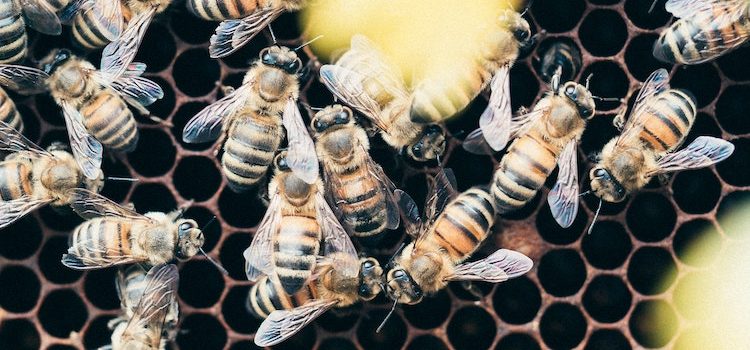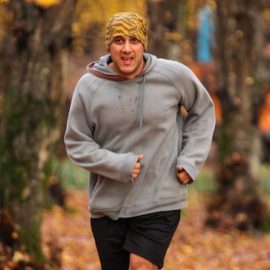

This article is an excerpt from the Shortform book guide to "The Righteous Mind" by Jonathan Haidt. Shortform has the world's best summaries and analyses of books you should be reading.
Like this article? Sign up for a free trial here .
How can the hive switch help us be less self-interested? What are some ways that we can flip the switch and become more group-interested?
Social psychologist Jonathan Haidt asserts that we are mostly self-interested. We only become group-interested, like bees, when we coalesce as hives of people. Haidt explains how the hive switch is a key to this change.
Read more to learn how to be less self-centered by flipping the hive switch.
Can We Learn How to Be Less Self-Centered?
Groupish thinking is part of our evolution, but we are still mostly selfish and individual. We’re about 90 percent chimp, who is only self-interested, and only 10 percent bee, who is group-interested.
Can we learn how to be less self-centered? What situations bring out the 10% of us that’s bee rather than chimp? This article will help to answer those questions and explain how “hives” of people coalesce. It will also give examples of specific situations in which we might be more likely to feel groupish.
So, in what ways can we be groupish in practice? Thousands of years of recorded history show that men at war are more willing to risk their lives for their comrades in the army than for any country or ideal. In the heat of battle, the “I” turns into a “we,” and if an individual dies, he lives on in the form of his comrades who survived.
We are hive creatures, but only in certain situations. Our hivemind tendencies are conditional on our surroundings. There’s a “switch” that will turn this tendency on and off—when it’s on, we’ll transcend self-interest.
Interpersonal and Inter-Social Relationships
In order to flip the hive switch from off to on to off again, we must be programmed to be able to put the group first. Émile Durkheim argued that humans have a group of sentiments that allow us to exist as an individual and another group of sentiments that allow us to exist as part of a group. These two groups of sentiments allow humans to exist on two different levels.
Interpersonal Relationships
The first level of sentiments allows us as individuals to coexist with other individuals. They include respect for others or frustration with others. These sentiments, which we’ll call interpersonal relationships, concern the self. They are present when our hive switch is flipped towards thinking selfishly.
Inter-Social Relationships
The second level of sentiments are bonds between individuals and society. They allow individuals to not only exist within a group but also abandon the idea of the self in favor of the needs of the group. When we’re on the second level, we exist more like a cog in a machine. We’ll call these sentiments inter-social relationships, and they are present when our switch is flipped towards thinking about the group, or the hive.
How to Flip the Hive Switch
There are certain strategies that can help humans move from self-interested chimp to group-interested bee.
- Find Awe in Nature: Maybe, while walking in nature by yourself, you’ve felt that your daily worries melt away and you feel only awe at what’s around you. This can make you think about new directions for your life or new values to practice. Ralph Waldo Emerson described being in nature alone as a spiritual experience that allows you to get in touch with a higher self and feel as if you’re part of something larger.
- Take “Durkheimogens”: An Aztec practice involved taking hallucinogens to unlock this sacred realm and leave the gross, stressful world behind. These drugs, like ayahuasca or LSD, can help us have a transformative experience where we abandon our idea of the self and our daily concerns—for this, we could call them “Durkheimogens.” Many societies use hallucinogens as part of rituals that officially turn boys and girls into men and women—they are supposed to help connect participants with ancestors or gods. Studies show that hallucinogens can create unity between individuals that take them together and a feeling of unity towards the world, along with many other effects. Participants said these experiences changed their lives and their relationship to spirituality.
- Attend Raves: Beginning in the West in the 1980s, large groups gathered together for raves, which included a combination of loud techno and trance music, youths mixing together and dancing communally to the music, and MDMA (the aptly street-named ecstasy), a drug that gives people more sustained energy along with more feelings of love. Tony Hsieh, the creator of Zappos, explained that when he attended his first rave, he felt swept up into a spiritual experience that made him feel a connection with everyone at the event as well as everyone in the universe. It also made him lose his self-consciousness. His “I” shut down and he found the “we.”
Of course, people flip the hive switch in lots of other ways as well. Anything from attending a political rally to meditating can do it. Usually, the effects last a few hours or days, but people do report life-changing experiences from these switch flips.
Students in particular are often doing things that flip the hive switch and allow them to find greater meaning than individualism. These activities include competing on teams, putting on a play, and volunteering.
The Hive Switch’s Biology
If you want to know how to be less self-centered, understanding biology can help. One biological mechanism that binds us to others is oxytocin, a hormone and neurotransmitter that prepares women for motherhood and provides other ways to motivate people into large groups. If you put a squirt of oxytocin spray into someone’s nose before a game, they’ll be more trusting. Additionally, our oxytocin levels rise when someone else shows us that they are trustworthy by keeping a promise. We are then more likely to repay their trustworthiness with trustworthiness of our own.
Levels of oxytocin also rise when people watch others suffering, feel empathy, and want to help. Oxytocin, though, only makes us want to protect our group. It doesn’t increase trust in any out-group.
Another biological mechanism that binds us is mirror neurons, or neurons that fire when we see an action performed by someone else. Studies show that if we develop empathy for someone, we can literally feel their pain. For example, in one study, three people played a game: The subject, a player who was kind during the game, and a player who was selfish. Then, each of the players including the subject put their hands on the table, where they were shocked at random. Brain scans showed that the subject’s brain responded to observing the nice player being shocked the same way it responded to the experience of being shocked himself. However, when the selfish player was shocked, the subject showed much less empathy. This shows that we don’t “mirror” others indiscriminately. Rather, we mirror, and therefore empathize with, only those who share our values—in other words, those in our “hive.”

———End of Preview———
Like what you just read? Read the rest of the world's best book summary and analysis of Jonathan Haidt's "The Righteous Mind" at Shortform .
Here's what you'll find in our full The Righteous Mind summary :
- Why we all can't get along
- How our divergent moralities evolved
- How we can counter our natural self-righteousness to decrease political divides






